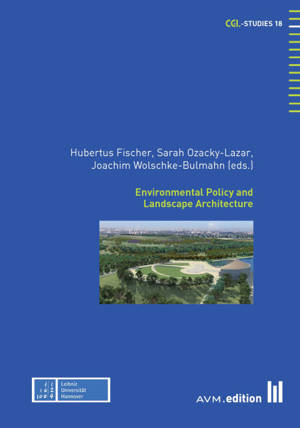
- Afhalen na 1 uur in een winkel met voorraad
- Gratis thuislevering in België vanaf € 30
- Ruim aanbod met 7 miljoen producten
- Afhalen na 1 uur in een winkel met voorraad
- Gratis thuislevering in België vanaf € 30
- Ruim aanbod met 7 miljoen producten
Zoeken
Environmental Policy and Landscape Architecture E-BOOK
€ 51,99
+ 51 punten
Omschrijving
Volume 18 in the CGL-Studies series, entitled "Environmental Policy and Landscape Architecture", is the result of an international symposium held in Jerusalem in March 2011 which was organised by the Van Leer Jerusalem Institute in collaboration with the Centre of Garden Art and Landscape Architecture. The symposium focused on how the many different facets of landscape architecture could help towards solving environmental problems. Sustainable Development and Landscaping, Environmental Policy and the Contribution of Landscape Architecture at a Local Level, Designing Public Open Spaces and Social Sustainability, Spatial Planning and Landscape Architecture in Israel/Palestine, and Water and Soil: Crisis and Conservation are the key chapters in this volume. The authors address a wide range of issues including the significance of religions in ideas about environmentalism in historical and current debates, how Palestinian society can meet challenges posed by the dynamic development of urban structures through capacity building in landscape architecture, and economically meaningful strategies for soil conservation in arable fields as part of agricultural sustainability in semi-arid areas. A key objective of the symposium was also to determine opportunities for cooperation in the field of environment and landscaping for Israelis, Palestinians, Muslims, Jews and Christians in a region marked by huge tension and conflicts. The authors are scholars of various disciplines such as landscape architecture, urban planning, technology assessment, philosophy of science, environmental communication and ecology, and come from Israel, Palestine, USA, Norway and Germany.
Specificaties
Betrokkenen
- Uitgeverij:
Inhoud
- Aantal bladzijden:
- 294
- Taal:
- Engels
- Reeks:
Eigenschappen
- Productcode (EAN):
- 9783960910015
- Verschijningsdatum:
- 20/03/2014
- Uitvoering:
- E-book
- Beveiligd met:
- Digital watermarking
- Formaat:

Alleen bij Standaard Boekhandel
+ 51 punten op je klantenkaart van Standaard Boekhandel
Beoordelingen
We publiceren alleen reviews die voldoen aan de voorwaarden voor reviews. Bekijk onze voorwaarden voor reviews.







